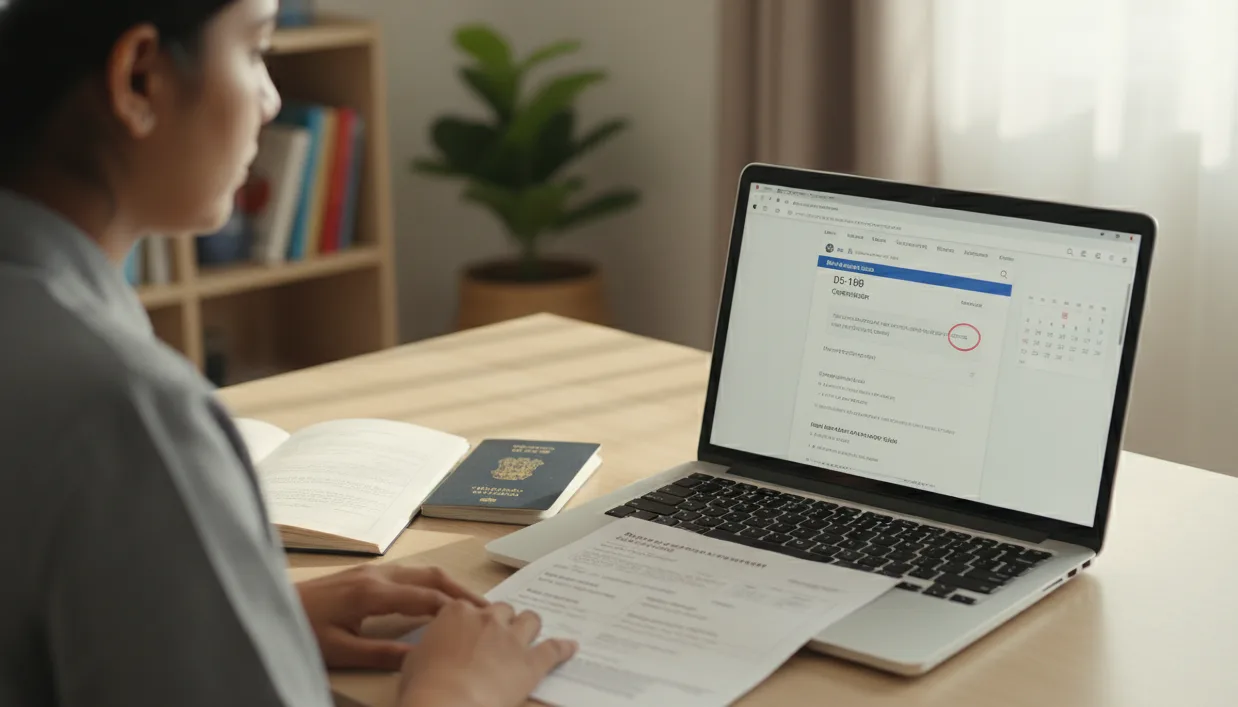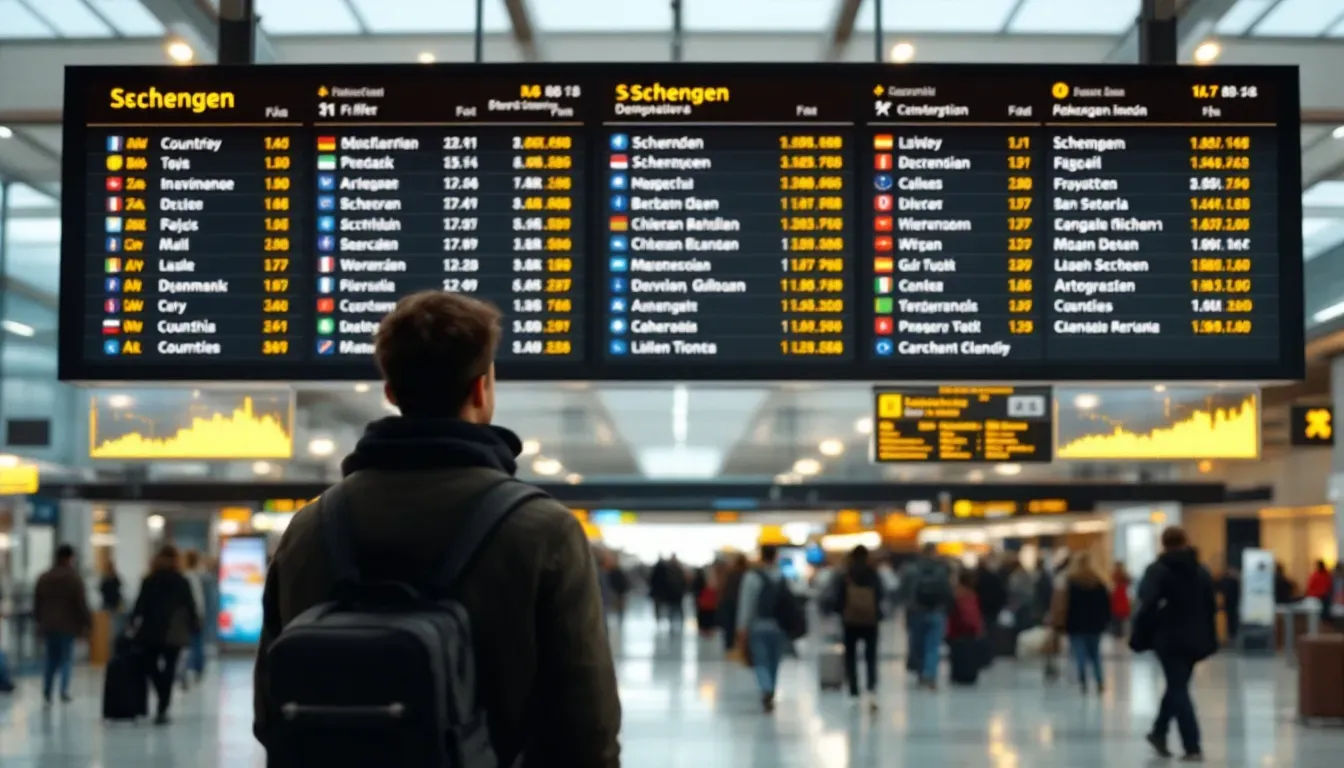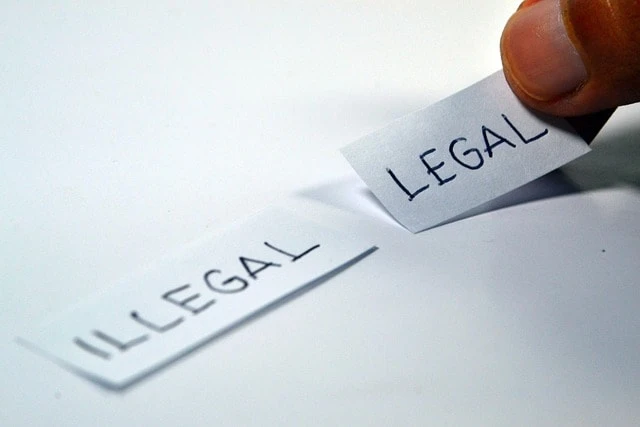Is A Dummy Ticket Helpful For an H1B Visa Application?

H1B Visa from India: Should You Show a Dummy Ticket or Not?
Your DS-160 is done. Interview slots are shifting. HR wants your tentative arrival time for onboarding. Fares jump every time you check. You’re asking the right question: should you hold a seat or keep your wallet closed until the visa is stamped? For H-1B, a ticket is not required at the petition, DS-160, dropbox, or interview. Still, a verifiable hold with a real PNR can be a smart planning tool. A dummy ticket ensures you show a realistic window that matches your I-797 and the LCA worksite city without any upfront costs.
It helps you show a realistic window that matches your I-797 and the LCA worksite city. It can also support employer approvals without locking cash, and protect you if 221(g) delays appear. In this guide, we cut the noise and compare three paths you actually face in India: a verifiable hold, a refundable fare, or no booking. For more details on visa timelines, visit our FAQ. Lock in a realistic arrival window—book a dummy ticket now. If you're exploring more visa travel tips, check out our blogs for expert insights.
A dummy ticket can be very helpful for H1B visa applications — especially when applicants need to show confirmed travel plans for consular processing or visa stamping interviews. While the U.S. Embassy does not require a paid flight ticket before visa approval, presenting a verifiable dummy reservation with a real Passenger Name Record (PNR) demonstrates readiness to travel and supports your intent to return to the U.S. after approval. Trusted platforms such as DummyFlights.com provide authentic, embassy-approved flight reservations that meet official documentation standards and can be verified directly through airline systems.
Last updated: October 2025 — verified against U.S. Embassy and VFS Global H1B visa documentation practices.
Table of Contents
Learn about our team's expertise in providing seamless travel solutions at About Us. In this guide, we cut the noise and compare three paths you actually face in India: a verifiable hold, a refundable fare, or no booking. Lock in a realistic arrival window—book a dummy ticket now.
Where A Verifiable Hold Actually Helps For H-1B Travel From India

You already know a dummy ticket is not a mandatory requirement. What you need is clarity on when a verifiable hold adds real value and when it is just noise. Use this to pressure-test your situation before you spend anything. Get a verifiable PNR for HR approvals with instant dummy ticket booking.
First Things First: What No One Will Ask You For
Nobody expects a paid ticket at these stages.
- USCIS does not need it for Form I-129.
- DS-160 does not require proof of purchase.
- Dropbox appointments in India do not ask for it.
- Consular officers at the interview focus on petition facts, not your booking.
Why this matters: If a consultant or agent is pushing you to buy, that is a red flag. Save your cash until there is a practical reason to show an itinerary. For official US visa guidelines, see the US Department of State.
Where A Real PNR Can Make Your Life Easier
A live, checkable hold can smooth out approvals and planning without locking funds.
- Arrival window that makes sense. Share an ETA that sits close to your I-797 validity and your joining date. This keeps HR, the client, and your own planning aligned.
- Worksite consistency. Fly into the metro that matches your LCA city. Seattle role means SEA, Bay Area means SFO or SJC, Dallas area means DFW. Consistency keeps your story tight.
- Employer procurement. Many Indian HR teams and relocation vendors want a tentative itinerary to trigger housing or airport pickup. A hold satisfies the workflow without a large payment.
- 221(g) hedge. If your case may enter administrative processing, a hold lets you adjust dates later so you do not incur change fees or refund delays.
- Family sync. For H-4, a hold helps you pencil in school start windows and medical plans before you commit.
When A Hold Adds Little Or No Value
Skip the hold if it does not help make a decision right now.
- Your start is months away and you may move. The hold will expire repeatedly and create extra admin.
- Worksite is changing, or an amendment is pending. Wait until the dust settles so your itinerary matches the approved location.
- You plan third-country stamping. Routing may change once you see those appointment calendars.
Realities You Should Factor In
You are working with Indian appointment patterns, Indian holiday peaks, and Indian employers’ documentation habits.
- Appointment variability. New Delhi, Mumbai, Chennai, Hyderabad, and Kolkata can show different slot flows. A hold helps you reserve the general shape of travel without betting on a specific date too early.
- Fare spikes around festivals and school breaks. A hold can protect a reasonable routing while you wait for stamping, especially during Diwali or December peaks.
- HR paperwork timing. Many Indian employers want your arrival city and tentative date for onboarding tickets or relocation clearances. A verifiable hold is often enough to unlock those steps.
Red Flags That Can Hurt Credibility
If you choose to share an itinerary, keep it clean and verifiable.
- Unverifiable PDFs. If someone checks the PNR and nothing pops up, credibility takes a hit with employers and could raise questions if referenced at an interview.
- Wrong city. Do not show a Los Angeles arrival for an Austin assignment. Map the airport to the LCA worksite area.
- Unrealistic timing. Landing six weeks before you start with no plan to be on payroll can create awkward questions at the port of entry.
- Name or passport mismatches. Ensure the hold mirrors your passport exactly.
Quick Mapping For Common Indian Hubs To U.S. Worksites
Use this only as a sense check before you share anything.
- Bay Area roles. SFO or SJC. OAK only if it truly fits your housing plan.
- New York or New Jersey roles. JFK or EWR.
- Seattle roles. SEA.
- Dallas area roles. DFW.
- Washington, DC area roles. IAD, DCA, or BWI based on commute.
- Austin roles. AUS.
- Boston roles. BOS.
- Chicago roles. ORD or MDW if it aligns with your housing.
How To Decide In Under Two Minutes
Ask yourself three questions.
- Does my employer or landlord need a specific arrival window today to move paperwork forward?
- Is my I-797 start date firm enough that an itinerary within a week of that date looks sensible?
- Is my LCA city fixed so I can pick the correct arrival airport?
If you answered yes to at least two, a verifiable hold can help. If not, wait. Keep your DS-160 “intended date of travel” tentative and revisit once your stamping is done or your start date is confirmed.
You do not need a ticket to win an H-1B visa. What you need is a plan that stays consistent with your petition. Use a real PNR hold only when it unlocks a concrete next step, like HR approvals or family coordination. Otherwise, keep your options open, watch the appointment calendar, and book once the visa is in your passport.
Keep Your Timeline Tight: An H-1B Travel Primer That Actually Helps
You do not need a ticket to file, but you do need a plan that fits the H-1B process. Use this to line up your dates, documents, and travel so everything tells one consistent story. Avoid sunk costs during 221(g) delays—book a dummy ticket and stay flexible.
The H-1B Journey
You already know the structure, but let’s put it in the order you will live it.
- Employer sponsorship. Your role must qualify as a specialty occupation, and your employer controls filings.
- For many, the cap lottery. Registration, selection, and then the petition season.
- Petition filing on Form I-129. Your employer files with supporting evidence.
- I-797 approval notice. This shows petition approval and dates. It does not give you a visa or the right to board a flight.
- Consular processing. You complete the DS-160, attend biometrics, and go for an interview or dropbox.
- Visa stamping. The visa goes into your passport after approval.
- Travel and U.S. entry. CBP admits you and issues an I-94.
- Day one. You report to the worksite listed in the LCA and begin payroll.
Why this order matters: your itinerary should echo these milestones. If your dates fight your paperwork, you create friction you do not need.
Dates That Must Talk To Each Other
Think of your timeline as a set of connected dots. Move one, and the others should shift with it.
- I-797 validity and start date. Plan to land close to your joining date. Arriving very early without payroll or housing looks odd.
- LCA worksite city. Your arrival airport should match the job location that appears in your paperwork.
- Offer letter and onboarding. HR calendars often start on Mondays. Aim for weekend arrivals so you are fresh for orientation.
- DS-160 intended travel date. This is not a commitment. Keep it realistic and adjust later if needed.
- H-4 dependents. School terms and medical timelines add real constraints. Sync their plan with yours or stagger by a few weeks.
Simple rule: if a date changes, pause and recheck airport choice, layovers, and connections. Keep the chain consistent.
DS-160, Dropbox, And Interview: What Officers Actually Care About
You are not judged on your ticket. You are judged on credibility and consistency.
- DS-160 travel details are indicative. Use a reasonable month and a routing that could work with your start date.
- Dropbox in India usually does not ask for an itinerary. Focus on clean forms and correct supporting documents.
- Interview conversations center on the job, employer-employee relationship, client site if applicable, salary, and location.
- If asked about travel, a simple plan that matches your start date and LCA city is enough. No need to produce receipts.
Your goal is to remove questions, not add documents. Keep answers straightforward and aligned with the petition.
Compliance Anchors You Should Not Ignore
These are the checkpoints that keep everything legal and smooth.
- Employer-employee relationship. Be ready to explain who supervises you and where you report on day one.
- Worksite accuracy. If you are placed at a client location, ensure your LCA covers that area.
- I-94 review at arrival. Check class, admit until date, and name spelling. Request correction immediately if needed.
- Address and payroll readiness. Have a U.S. address for onboarding and tax forms. Temporary housing counts if HR accepts it.
- Amendments or transfers. If your worksite is changing, coordinate travel with your attorney and HR so the story stays consistent.
Treat these anchors as your guardrails. If you drift, fix the drift before you fly.
Planning For Dependents Without Burning Cash
H-4 travel is a logistics puzzle. Solve it with sequencing and buffer time.
- Staggered arrival. You can travel first to set up housing, schools, and transport. Family can follow once your schedule is stable.
- School calendar alignment. Target arrivals before term starts or right after exams.
- Medical planning. Carry prescriptions and plan layovers that allow rest for kids or elders.
- Documentation sync. Marriage and birth certificates should match passport details. Keep certified copies and scanned backups.
A clear H-4 plan reduces last-minute rebooking and helps you avoid peak-season price spikes.
Appointment And Travel Realities
Your choices depend on India’s consular flow and airline pricing rhythms.
- City differences. New Delhi, Mumbai, Chennai, Hyderabad, and Kolkata do not move in lockstep. Watch slot patterns before fixing a week.
- Peak periods. Diwali and year-end push fares and limit seat options. If your visa is not stamped, avoid paying in full during these windows.
- Routing practicality. Nonstops are limited from India to many U.S. cities. Smart one-stop options via the Middle East or Europe can keep total time humane without blowing the budget.
Keep flexibility until your visa is issued. It is cheaper than unwinding a paid mistake.
What To Do If 221(g) Hits
Administrative processing is a pause, not a verdict.
- Freeze major spending. Do not buy nonrefundable tickets.
- Track your case. Use the case status page and note changes.
- Coordinate with HR. Share realistic windows and ask for onboarding flexibility.
- Hold your shape of travel. If you need a placeholder itinerary for approvals, keep it adjustable so you do not lose money.
Your aim is to protect cash and preserve options while the case moves.
Verifiable Hold vs. Refundable Fare vs. No Booking. What Works For Indian H-1B Travelers

You want a plan that protects cash, fits your documents, and keeps your employer comfortable. Use this guide to choose the option that solves today’s problem without creating tomorrow’s. Align your I-797 start date and LCA city using quick dummy ticket booking. 👉 Order your dummy ticket today to stay ahead of any delays.
The Three Paths, Decoded For Real Life
Verifiable hold with a real PNR.
You get a live, checkable reservation. It signals a realistic arrival window that aligns with your intended employment. You avoid paying a full fare before stamping. Good when your HR or relocation vendor needs an itinerary to move approvals.
Fully refundable ticket.
You lock a genuine seat and a ticket number. Refund timing can vary by airline and payment method. Useful if your approved petition is in hand and dates are firm, but you still want an exit route.
No booking at all.
You spend nothing and keep total flexibility. Best when slot uncertainty is high or your worksite could change. Works fine because H-1B is a non-immigrant worker visa category that does not require paid tickets for DS-160, dropbox, or interview.
A Decision Grid That Matches Indian Scenarios
Use these snapshots to decide in minutes.
- Selected in the lottery process, stamping next month, start in 3 to 5 weeks.
Choose a verifiable hold. It satisfies a prospective employer’s travel workflow without cash burn. If dates shift, you adjust the hold instead of chasing refunds tied to eastern daylight time cutoffs. - Cap exempt transfer with quick onboarding.
A refundable fare can be reasonable if your new employer confirms a fixed date. If timing wobbles, drop back to a hold. - High chance of 221(g) or client documentation pending.
Pick no booking or a hold only. Protect savings until border protection is the only hurdle left. - Family traveling with H-4.
Start with holds so you can sync schools and housing. Convert to paid once visas are stamped for all visa holders. - Amendment or a different city under the same employer.
Use a hold to match the LCA city while the attorney finalizes updates. Do not buy a nonrefundable ticket until the location is locked. - Change employers after stamping.
If portability is in play, keep hold until new employment details are fixed in writing.
Sanity Checks Before You Share Any Itinerary
Run these checks to keep your story tight.
- Airport to worksite. The arrival city should make sense for the particular occupation and client site you will serve.
- Dates to documents. Your timing should sit near the I-797 start. If you filed a status request with the United States Citizenship Services, verify that the admission plan matches the outcome.
- Payroll readiness. Coordinate with HR on onboarding, housing, and commute.
- Dependents. Align for unmarried children and spouse if applicable.
- If cap exempt. Confirm internal timelines so the trip does not collide with busy project ramps.
Why Fake PDFs Are A Bad Bet
An unverifiable file can undermine credibility with employers and officers. It also conflicts with the spirit of the Immigration and Nationality Act, which expects truthful representations from every visa applicant. If someone checks the PNR and finds nothing, you invite harder questions that can adversely affect the next steps.
Cost, Flexibility, and Risk. A Quick Reality Check
- Upfront cash. Hold is minimal. Refundable fare blocks more money. No booking costs zero.
- Change friction. Holds are easy to nudge if your attorney is still calibrating the prevailing wage location or client approvals. Refund rules can be strict.
- Worst case. If 221(g) arrives, a paid ticket becomes a liability. A hold or no booking keeps you mobile.
- Employer workflows. Some American employers need an itinerary to unlock housing or airport pickup. A hold satisfies that without implying you are replacing American workers or committing to a fixed date prematurely.
- Calendar coherence. Remember the fiscal year cycles. The electronic registration process and registration period create seasonal surges. Prices move with demand, not with your paperwork.
H1B Visa And Rights Of American Workers
Your travel plan should reflect how the H-1B is designed for certain non-immigrant workers with highly specialized knowledge. Employers must follow labor market rules and attest to conditions that do not harm American workers. They file LCAs and may handle labor certification for later green card steps. None of that obligates you to buy tickets before stamping. It only requires that your plan make sense for the foreign country you depart from, the worksite, and the petition facts.
You may hear noise about outsourcing companies or fashion models in niche H classifications. Focus on your lane. If you are in computer science or another STEM field, your route is to perform services for the employer that sponsored you, then use extensions like an extension petition if needed. Travel only needs to mirror the paperwork, not outpace it.
When A Light-Touch Document Helps
If you want a verifiable hold with an instant delivery and unlimited date tweaks, DummyFlights.com issues a live, checkable reservation for 15 USD that is built for embassy use. Use it to keep approvals moving, then convert to a paid fare once the visa is in your passport. If HR wants proof of plan today, use a verifiable hold. We book your reservation with major airlines like Air India, United, Emirates, or Lufthansa as placeholder itineraries.
Tie your itinerary to the approved petition, the LCA city, and the onboarding calendar. Once stamping clears and housing is set, move from hold to purchase. That sequence respects policy, protects savings, and gets you to day one ready to work.
Practical Playbooks And Checklists You Can Use Right Now
You have the big picture. Now let’s turn it into steps you can follow without second-guessing. Use these playbooks to keep your travel plan consistent with your paperwork and your employer’s timeline. Preparing for a dropbox or an interview? Book a dummy ticket in minutes.
Pre-DS-160: Set The Frame Before You Spend
Start with a clean document trail that matches your petition facts.
- Confirm your job title and worksite align with a particular occupation listed in the petition.
- Note the initial period on your approval and build a realistic arrival week around it.
- If your employer plans to hire foreign workers for multiple teams, ask HR which site you will report to on day one so your routing makes sense.
- Keep your answers simple and consistent across the application process. Avoid extra documents you do not need.
If your role sits at the intersection of higher education and industry projects, capture the theoretical and practical application you will work on. It helps you explain why your skills matter without drifting off-script. To expand on common pitfalls, explore our blogs.
Before Appointment Week: Keep Options, Signal Intent
You want flexibility without locking cash.
- Prepare one tentative route to the LCA city.
- Share a sensible arrival window with HR if they need it to allow housing or airport pickup.
- If your employer wants more, ask whether a short-term hold is enough. It keeps you agile if dates move.
Some companies use external immigration services to track travel readiness. Keep your itinerary simple so they can tick their box and move on.
Interview Or Dropbox Week: Be Consistent, Not Elaborate
Stay focused on credibility.
- Bring the petition pack and your passport.
- If asked about travel, mention the week that matches your start date and worksite.
- Do not overshare. You are not required to show paid tickets for this visa category.
Remember that officers care about whether you will perform services in the stated location, not about which airline you prefer. Keep answers short and accurate.
If Administrative Processing Appears: Protect Your Cash
A pause is common. Your goal is to minimize losses and keep plans coherent.
- Put nonrefundable purchases on hold.
- Update your employer with the next check-in date.
- Maintain a placeholder itinerary if HR needs it for logistics.
If your spouse plans to work later, read up on employment authorization and how employment authorization documents renew. Policies on automatic extension and automatic EAD extensions change, and ending automatic EAD extensions can disrupt family timing if you cut plans too tight. For quick answers, refer to our FAQ.
After Visa Approval: Move With Intent
Now convert planning into travel.
- Reconfirm the onboarding date and the reporting address with the same employer that filed your petition.
- Align arrival with a weekend so you start the week fresh.
- Check your name and dates match your approved petition and your passport.
If you are switching to a new employer later, lock travel only after you have written confirmation of new employment and location. Keep your documents tidy so airport checks are quick.
Family Strategy: Make H-4 Logistics Work For You
Treat dependents like a parallel project.
- Decide whether you travel first or together. Staggering can reduce stress for young or unmarried children.
- Map school calendars and vaccinations.
- Keep certified copies of marriage and birth records.
- If your spouse plans to work, track eligibility rules for eligible individuals and the timing of further extensions once in the United States.
Plan for one buffer week after arrival before you lock long-term housing. It gives you time to set up banking and mobile service without rushing.
Compliance Guardrails You Should Not Ignore
These points keep you aligned with the law and policy.
- H-1B is for certain nonimmigrant workers. Your role should fit a specialty that American employers cannot easily fill.
- Employers must not adversely affect the labor market or appear to be replacing American skilled workers. Your itinerary should reflect a real job at a real site.
- The Nationality Act and the broader framework under the US government require truthful forms and consistent statements. Keep your paperwork clean.
- At the airport, border protection will look for a clear story. Carry your I-797, offer letter, and client letter if relevant.
- If you aim for permanent residence later, talk to your attorney about when labor certification might start and how travel affects timelines. Green card holders in your family have different rules than temporary workers, so plan accordingly.
If a policy update or presidential proclamation shifts timelines, focus on official notices and ask your employer for further information before you rebook.
Practical Routing Tips For Indian Travelers
Pick routes that support day one, not just the cheapest fare.
- Choose the airport that fits the worksite commute.
- Avoid risky misconnects when traveling through a foreign country on tight schedules.
- Keep layovers humane if you travel with kids or elders.
- Pack your documents in your carry-on so you can respond quickly during checks.
If your area is known for tight project windows, ask HR whether cap-exempt transfers or internal moves are possible later. It can influence whether you aim for a short visit first or a direct move with baggage.
Quick Self-Check Before You Share Any Itinerary
Run this list before you send anything to HR or a landlord.
- Does the arrival city match the worksite noted in your petition?
- Is the week of travel close to your joining date in the approved petition?
- Are names and passport numbers correct on every document?
- Will this plan still work if your appointment slides by seven days?
These playbooks keep your plan honest, simple, and aligned with policy. You stay flexible when you need to, and you commit only when it is time to fly. To learn more about our commitment to reliable service, visit About Us.
Booking-System Realities That Save Face (And Money)
Before we pick dates or argue about fares, we should understand how airline systems actually behave. A little inside knowledge saves cash, protects credibility, and keeps your plan flexible when visa timing shifts.
PNR Vs. E-Ticket: What You Really Hold In Your Hand
Let’s start simple. A hold creates a PNR. That is a reservation record in the airline or GDS. It proves the itinerary exists. An e-ticket is different. It shows the fare is paid and a ticket number has been issued.
Use this rule of thumb before you share anything with HR or a landlord. If your code pulls up on the airline “Manage Booking” page, your hold is real enough for planning. If there is no ticket number yet, that is fine. We are signaling intent, not committing money.
This matters to everyone. A student waiting on stamping can show a real plan without locking cash. A first-time applicant can avoid panic buys. A family visitor can coordinate airport pickups. A digital nomad can keep options while juggling client dates.
Ticketing Time Limit: Why Holds Vanish And How To Read Them
Every hold has a TTL. That is the expiration moment when the airline auto cancels your reservation if you do not ticket. TTLs can be hours or days. Some channels show the clock clearly. Others hide it in small print.
Read the TTL the moment you receive a confirmation. Note it in your calendar with a reminder 6 to 12 hours earlier. If your visa step slips, refresh the hold with a similar route and dates instead of clinging to one exact flight. The shape of the trip is what stakeholders need. Not the flight number.
Airline Vs. OTA Holds: Visibility Is Your Credibility
Not all holds are equal. Some OTAs place records you can only see on their portal. That is useless when a manager tries to check on the airline site.
Prefer holds that resolve on the operating carrier’s website using last name and booking code. If an agent cannot confirm this, use another channel. We protect credibility by making verification simple for anyone who needs it.
Fare Building Blocks: Married Segments And Why One Change Breaks Everything
Modern fares often price two flight legs as a married pair. Change one leg and the fare can reprice. That is why a simple time tweak sometimes explodes the cost.
When we build a provisional plan, we choose itineraries with healthy alternatives on the same alliance. If a leg moves, we can switch to a sibling connection without starting over. This is gold during festival peaks or winter operations.
Name Rules And DOCS: Get It Right The First Time
Airlines lock names once a ticket is issued. Holds are more forgiving, but we still match the passport exactly. No extra spaces. No swapped given and family names. Most holds do not need full passport data until ticketing. Share only what is required. That reduces data risk when you are working with small shops.
Students and first-time applicants should double check spelling on every document before creating a hold. Family visitors should align given names for minors as they appear in passports. Digital nomads should keep a standard profile text file to copy into forms so nothing drifts.
Refundable Tickets Are Not Magic: Read The Fine Print
Refundable does not always mean instant cash back. Some fares refund to vouchers. Some deduct service fees. Timelines vary by card and airline.
Before you buy, scan for four items:
- Refund form of payment. Cash to card or voucher only.
- Deadline to cancel without penalty.
- Currency rules and conversion timing.
- Average refund processing time.
If 221(g) risk is real, a refundable ticket is still a cash float. In that case, a rolling hold is safer. We turn money into tickets only when the probability of travel is high.
No-Show Traps: Miss One Leg And Lose The Rest
Airlines cancel remaining segments when you no-show the first one. That can wipe out your return. If plans change on short notice, make a same-day change or cancel before departure time. Even a small fee beats losing the whole itinerary.
Families should watch this on multi-city trips. Digital nomads who stitch work visits with personal stops should keep alarms for each segment. A two-minute cancellation call prevents a chain reaction.
Schedule Changes Are Opportunity: Use Them To Your Advantage
When the airline moves your flight time, you gain leverage. That is an involuntary change. It lets you adjust to a better connection or a more convenient arrival at zero extra cost.
Here is the play:
- Watch for airline schedule emails.
- Call the carrier, not the OTA, for faster options.
- Ask for changes that fix pain points like short connections or late-night arrivals.
Students can pivot to safer arrival hours before orientation. First-time applicants can secure longer buffers. Family visitors can pick daytime arrivals that align with host schedules. Digital nomads can choose hubs with better lounges or Wi-Fi for work.
Connection Buffers And Protection: Avoid Misconnect Roulette
Minimum connection times vary by airport and alliance. Winter hubs need extra slack. One-hour domestic connections after a long-haul are a gamble.
Choose protected connections on one ticket and one alliance when possible. If a delay occurs, the airline rebooks you. If you split tickets to save a little, you accept the misconnect risk. We want you fresh for Day One, not sleeping on gate chairs.
Quick, Real-World Checklists You Can Copy Today
A simple checklist beats stress. Use these to keep things tight.
Before Sharing An Itinerary
- Verify the PNR on the airline site.
- Note the TTL and set a reminder.
- Check arrival airport matches LCA city.
- Confirm name spelling matches passport.
When Buying A Refundable
- Confirm refund goes back to card.
- Read change and cancel rules.
- Check currency and processing time.
- Save fare rules as a PDF.
If Plans Shift
- Renew the hold with the same route shape.
- Avoid no-shows. Call to cancel or change.
- Leverage schedule changes for better times.
- Keep all confirmations in one folder.
We do not need to outsmart the system. We just need to understand it. When we use holds that verify, respect TTLs, and build sane connections, we avoid last-minute drama. That is how students land ready for orientation, first-time applicants keep costs low, family visitors arrive calm, and digital nomads stay flexible without losing credibility.
Port-Of-Entry Ops And I-94 Mastery That Keep You Moving
The visa is in your passport. The plane is booked. Now the real checkpoint starts at the border. A calm plan for the port of entry and a clean I-94 save time, stress, and sometimes your first paycheck.
What Really Happens At The Border
You meet an officer. They check why you are entering, who you will work or study with, and whether your paperwork lines up. Most entries are quick. Some go to secondary inspection for a closer look. That is normal, not a judgment.
You help yourself by staying clear and consistent. Officers appreciate short answers that match your documents. We treat this as a teamwork moment. You provide facts. They confirm and admit.
Expect simple questions
- What is the purpose of your trip
- Who is your employer or school
- Where will you stay
- When do you start
Keep answers aligned with your petition, I-20, or invitation. If the officer wants more, they will ask.
The Doc Pack That Gets You Through Faster
You do not need a suitcase of paper. You need a focused set you can pull out without fumbling. Put it in a slim folder in your carry-on. Keep digital copies offline on your phone.
For H-1B workers
- Passport with visa and I-797 approval notice
- Offer or employment verification letter
- Client letter if you are at a third-party site
- U.S. address for onboarding forms
For students
- Passport with visa and I-20
- SEVIS fee receipt
- School contact and campus address
For family visitors
- Return or onward plans
- Host address and phone
- Basic proof of ties at home if asked
For digital nomads and business visitors
- Clear purpose and agenda
- Return plans or onward tickets
- Company letter if meeting clients
We keep it light. We keep it consistent. We keep it reachable without unpacking.
Primary Vs. Secondary: What To Expect And How To Stay Calm
Primary inspection is the quick conversation at the first desk. If the officer needs to review more, you go to secondary. It feels serious because phones usually stay away and seating is limited. Still, this is routine.
Use the wait to breathe and prepare your timeline. Students think about orientation date and campus location. First-time applicants recall employer address and reporting time. Family visitors confirm host details. Digital nomads line up client names and meeting dates.
When called, answer clearly. If you are asked about job duties or worksite, speak to the role and location listed in your paperwork. If something changed, say so and show any updated letter. Honesty plus documents beats guesswork every time.
Routing Choices That Reduce Stress
Smart routing prevents avoidable drama. Long-hauls followed by tight domestic connections create risk. Weather hubs in winter need extra buffer.
Plan for:
- A protected connection on one ticket and alliance
- At least 2 hours for first entry into the country
- Daylight arrivals if you can choose
Students appreciate daytime arrivals before orientation. Family visitors benefit from easier airport pickup. Digital nomads get a cushion to clear emails before the next hop.
Your Border Script: Short, Friendly, Consistent
We do not improvise at the window. We stick to a simple script that matches documents. Speak slowly. Stop when the officer starts typing.
Examples
- Student: “I am entering to start my program at [University] in [City]. Orientation is on [Date]. Here is my I-20.”
- H-1B worker: “I am entering to work with [Employer] in [City]. My start is [Date]. Here is my I-797 and offer letter.”
- Family visitor: “I am visiting family in [City] for [X] weeks. I will stay at [Address]. Here is my return plan.”
- Business visitor: “I am attending client meetings with [Company] in [City] this week. I return on [Date]. Here is the agenda.”
Short, direct answers make the line move and keep your day smooth.
I-94 Basics: Why It Matters And How To Check It
The I-94 is the record of your admission. It shows who you are, your class of entry, and how long you can stay. Many payroll, license, and compliance steps depend on it.
Always check the I-94 on the same day you arrive. Use the official website once you have Wi-Fi. Confirm three items:
- Class of admission is correct
- Admit until date matches your status rules
- Name and passport number match your documents
If the class or date is wrong, fix it quickly. Mistakes cascade into HR systems and banks.
Fixing I-94 Issues The Right Way
Some errors can be corrected at the airport with the supervisor on duty if you catch them immediately. If you have already left, use a deferred inspection office. These CBP locations correct admission records without another trip abroad.
Bring your passport, visa, I-797 or I-20, and any letters that support the correction. Explain the error and the correct details. Keep a screenshot of the updated record for your HR onboarding file.
Digital Hygiene That Makes The Process Smoother
You do not need to show your whole life. You do need quick access to key files. Set up offline copies on your phone or tablet for the essentials. Turn on device passcodes. Keep photos of core pages in a secure album for fast retrieval.
Store:
- Bio page of passport and visa
- I-797 or I-20
- Offer letter or enrollment confirmation
- Housing address and employer contact
This helps if your printed folder gets wet or you are asked for a detail while away from Wi-Fi.
First 48 Hours: Set The Foundation
We want your first two days to feel controlled. A small checklist helps everyone, from students to visiting parents.
Do this within 48 hours
- Pull your I-94 and save a PDF
- Share your confirmed U.S. phone number with HR or school
- Plan your commute or campus route before Monday
- Keep receipts and travel confirmations in one folder
Students can schedule campus ID and orientation. First-time workers can confirm badge pickup. Family visitors can share a simple itinerary with the host. Digital nomads can book a quiet workspace near lodging.
If Your Connection Is Tight Or A Flight Slips
Delays happen. You can still protect the day. If you risk missing a domestic connection after immigration, speak to airline staff as soon as you exit customs. Ask for the next protected flight to your arrival city. If the delay was the airline’s fault, they rebook you. Keep your documents handy in case you re-clear security.
If a long delay pushes arrival to late night and safety is a concern, ask for a hotel voucher or rebook to a morning flight. It is better to arrive rested and ready than to gamble on a midnight commute to new housing.
A Simple Pack That Wins The Line
Your border kit is small. It lives in the seat pocket during descent. It makes you look prepared.
Pack:
- Passport with visa
- I-797 or I-20 on top
- One employer or school letter
- Address card for your first stay
- Printed itinerary with booking code
That is all you need to move with confidence.
We treat the port of entry as the final checkpoint, not a mystery. Clear answers, a tight doc pack, smart routing, and a same-day I-94 check keep you moving. Students start orientation on time. First-time applicants make HR proud. Family visitors get warm arrivals. Digital nomads glide to the next meeting without drama.
After Approval: Turn Plans Into Tickets And Win Your First 30 Days
Visa issued. Relief hits. Now we convert intent into action. A steady checklist will keep you calm, save money, and set you up for a strong start.
Week 4–3: Lock The Ground Truth Before You Buy
Before we touch fares, let’s make sure the plan still matches the paperwork. Small confirmations now prevent big fixes later.
- Confirm onboarding date with HR and your manager.
- Reconfirm the reporting address and worksite city.
- Check that the airport you plan to fly into matches the worksite.
- Shortlist two routings. Pick a primary and a backup on a different alliance.
- Decide your arrival window. Weekends are ideal for a Monday start.
Students should match arrival with orientation and housing check-in. First-time applicants should coordinate with IT for laptop pickup. Family visitors should confirm host availability. Digital nomads should sequence client meetings so the first day is light.
Week 3–2: Convert Holds Or Buy Tickets With Flex Built In
With dates aligned, we move to ticketing. Keep flexibility high without overpaying.
- Convert a verifiable hold to a paid ticket if timing is firm.
- If you did not hold, buy a fare with friendly changes. Avoid basic tiers that punish date shifts.
- Pick daylight arrivals when possible. It helps with airport pickups and safety.
- Aim for one-stop or nonstop. Reliability beats clever shortcuts.
- If policy requires a return, choose a changeable ticket or refundable return.
Check the rules before you pay. Look for refund method, change fees, same-day change options, and currency handling. Students can ask the international office for recommended arrival windows. Families can plan a slower connection for kids or elders. Digital nomads can pick hubs with reliable Wi-Fi if they must work on the move.
Week 2–1: Nail The Logistics That Make Arrival Easy
Good logistics prevent day-of surprises. We set up transport, documents, and communications.
- Book airport transport or ask HR for pickup details.
- Save maps offline. Pin your housing, office, campus, and grocery store.
- Confirm baggage rules for each segment. Domestic links sometimes shrink allowances.
- Pack a small weather kit in your cabin bag. Jacket, meds, a compact umbrella.
- Prepare a paper folder. Place passport, visa, I-797 or I-20, offer or school letter, and printed itinerary on top.
- Set up a short arrival message for HR or your host with flight number and ETA.
Students should schedule campus ID and housing check-in slots. First-time applicants should confirm I-9 instructions and acceptable documents. Family visitors should keep host details printed. Digital nomads should reserve a quiet workspace for day two.
Final 3–4 Days: Do The Quality Checks Professionals Do
These checks look simple. They prevent the most common errors.
- Match your ticket name to your passport. Check order and spelling.
- Print the itinerary with booking code. Keep one copy in each bag.
- Create offline copies of key documents on your phone.
- Review a short border script. Purpose, employer or school, city, start week.
- Confirm seat assignments. Avoid last-row stress if you can.
- Pack a small snack and water bottle. Arrivals run long if queues build.
If the airline announces a schedule change, call and improve the connection or arrival time at no extra cost. This is your chance to move to a safer buffer or a better hour.
Arrival Weekend: Settle The Essentials And Walk The Route
You made it. Now we make Monday smooth. Keep the weekend light but purposeful.
- Get a local SIM and data plan. Share your number with HR or school.
- Walk the commute once. Learn entrances, security, and timing.
- Stock the basics. Water, snacks, and breakfast for day one.
- Photograph your entry stamp and pull your I-94 online. Save the PDF.
- If anything on the I-94 is wrong, note it and plan a correction on Monday.
Students can find their classroom buildings and a quiet study spot. First-time workers can test badge pickup instructions. Family visitors can plan a short outing with the host. Digital nomads can check a backup café in case the first workspace is full.
Week 1: Complete The Admin And Win Quick Trust
This week is about trust and momentum. We show up prepared and responsive.
- Complete I-9 or equivalent onboarding. Bring the right documents.
- Share a clear contact number and temporary address.
- Meet your manager or advisor. Confirm goals for the first week.
- Finish laptop setup, VPN, and access requests on day one if possible.
- Submit any travel expenses with clean receipts in one PDF.
- Block a modest schedule. Two deep-work blocks per day is enough at first.
Students should attend orientation early and ask about student services. First-time workers should share a light weekly plan to show discipline. Family visitors should set a return plan and confirm rides for the airport. Digital nomads should schedule focused client sessions and one buffer afternoon for unexpected admin.
Weeks 2–4: Stabilize Housing, Health, And Rhythm
The first month sets your baseline. We now secure the routines that keep life steady.
- If you started in temporary housing, tour three rentals in week two. Apply with your offer letter.
- Confirm health coverage start date. Add a primary care provider if needed.
- Open a bank account that fits your payroll cycle. Set alerts for low balances.
- Build a simple budget. Rent, transport, groceries, mobile, and a buffer.
- Create a weekly rhythm. Commute plan, meal prep, and laundry slots.
- If your family arrives later, schedule school visits and a pediatric appointment now.
Students can join one club or cohort to build support fast. First-time workers can present a 30-day summary to the manager. Family visitors can plan a gentle last week with fewer outings. Digital nomads can book the next work location with smart gaps for travel.
If Something Slips: Keep Calm And Use The Tools
Delays happen. We respond with a steady hand.
- If a flight cancels, speak to the airline first. Ask for the next protected option.
- If luggage delays, file the report before leaving the airport. Keep day-one essentials in carry-on.
- If the onboarding date moves, tell HR and your manager the new arrival window and ask for a revised schedule.
- If the I-94 looks wrong, use deferred inspection to fix it. Bring all proof.
A composed update beats a long apology. Share the issue, the action taken, and the new plan in three sentences.
One Folder, One Source, Zero Noise
Scattered files create stress. A single folder removes it. Keep one digital folder and one small paper folder with:
- Passport bio page and visa
- I-797 or I-20
- Offer letter or enrollment confirmation
- Itinerary, booking code, and receipts
- I-94 PDF after arrival
- Address sheet with key contacts
Update HR or school with only what they need. We keep data minimal and organized.
The Principle That Wins Every Time
Reliability beats small savings. Solid connections, daylight arrivals, clean documents, and clear updates make you look like a pro. Students start class calm. First-time applicants earn trust quickly. Family visitors enjoy the trip instead of firefighting. Digital nomads keep clients happy while moving smoothly.
Turn the plan into tickets with care. Use the first 30 days to build stable routines. Do that, and everything else gets easier.
What Travelers Are Saying
Strengthen Your H-1B Petition With A Dummy Ticket
You do not need a ticket for the H-1B petition, DS-160, dropbox, or interview. What you need is a plan that fits your I-797 dates, LCA worksite, and onboarding.
Use a verifiable hold only when it unlocks something real, like HR approvals or family coordination. Choose a refundable fare when dates are firm, but you still want an exit. Keep no booking when timelines are cloudy.
Avoid unverifiable PDFs. Match your arrival airport to the worksite city. Aim to land close to your start date. Sync H-4 travel with school and housing.
Keep forms clean, documents consistent, and options open until stamping is done. Travel when the paperwork and dates line up, then commit with confidence. Keep your plan compliant and stress-free with secure dummy ticket booking.
Related Guides
About the Author
Visa Expert Team - With over 10 years of combined experience in travel documentation and visa assistance, our team at DummyFlights.com specializes in creating verifiable travel itineraries. We’ve helped thousands of travelers navigate visa processes across 50+ countries, ensuring compliance with embassy standards.
Trusted Sources
- U.S. Department of State - Visa Information
- Schengen Visa Information
- International Air Transport Association (IATA)
Important Disclaimer
While our dummy tickets with live PNRs are designed to meet common embassy requirements, acceptance is not guaranteed and varies by consulate or country. Always verify specific visa documentation rules with the relevant embassy or official government website before submission. DummyFlights.com is not liable for visa rejections or any legal issues arising from improper use of our services.











